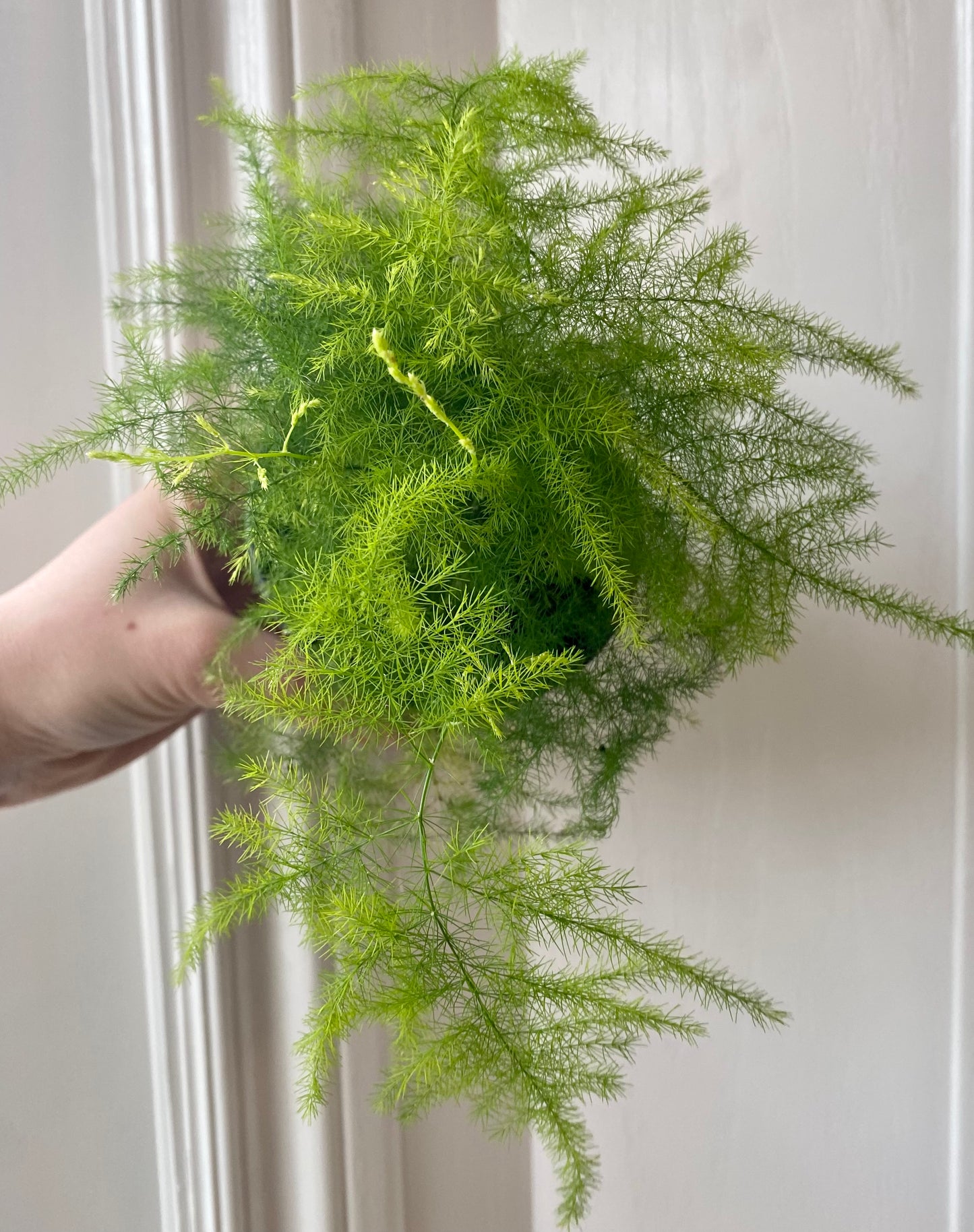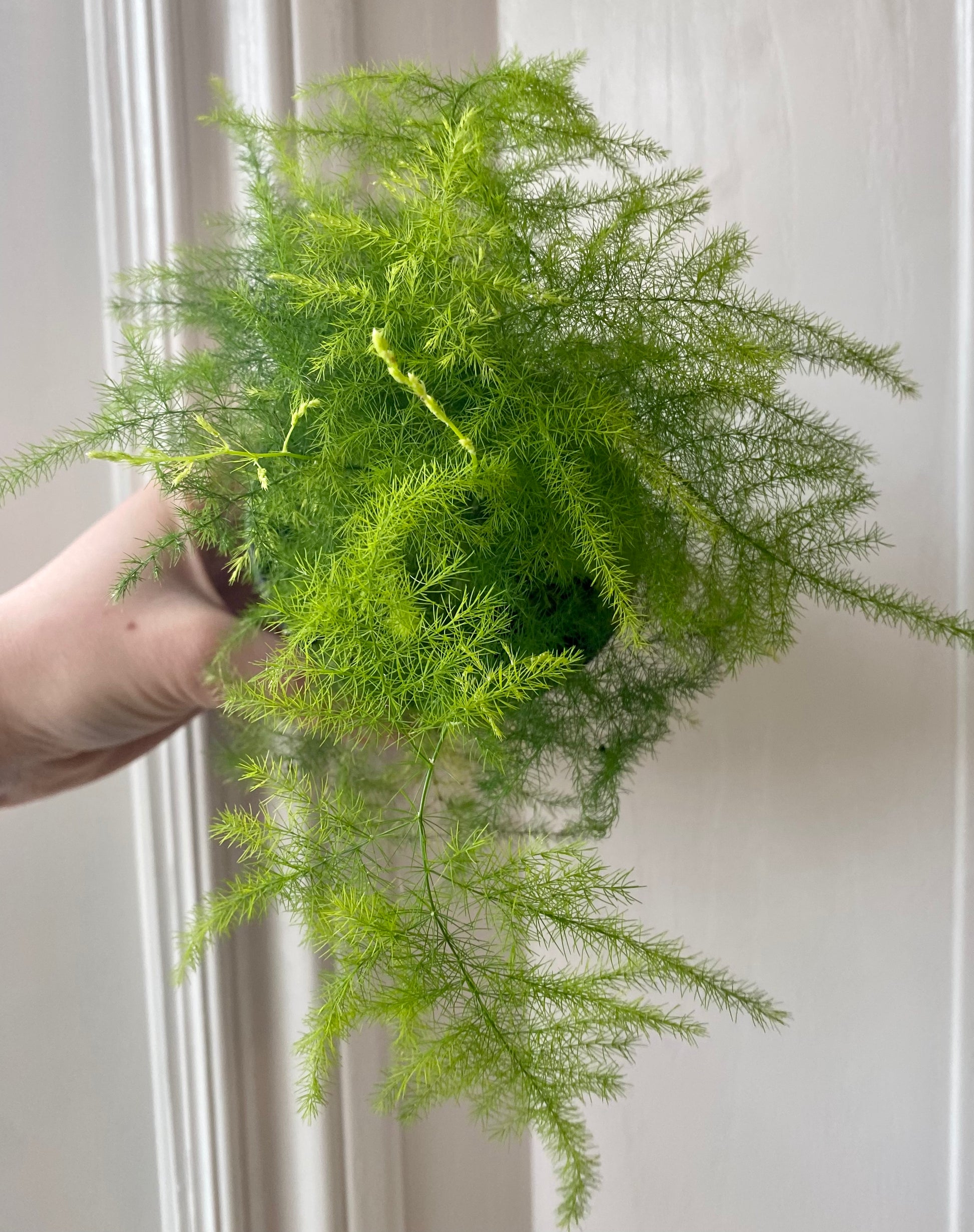Asparagus Fern
Asparagus Fern
Couldn't load pickup availability
Asparagus fern, also known as Plumosa fern or Asparagus plumosa, is a popular ornamental plant valued for its delicate, feathery foliage. Despite its common name, it is not a true fern but rather a member of the Asparagus genus in the Asparagaceae family. Here's some information about Asparagus fern:
-
Appearance: Asparagus ferns have soft, needle-like leaves that grow in clusters along arching stems. The foliage resembles delicate, green, feathery plumes, which give the plant its common name. The stems can grow several feet long, creating a graceful, cascading effect. In addition to the green variety, there are also variegated cultivars with creamy or white streaks on the leaves.
-
Native Habitat: Asparagus ferns are native to South Africa. In their natural habitat, they can be found growing in sandy, well-drained soils in both sunny and partially shaded locations.
-
Light: Asparagus ferns prefer bright, indirect light. While they can tolerate some direct sunlight, especially in the morning or late afternoon, prolonged exposure to intense sunlight may cause the foliage to burn or turn yellow. Place them near a window where they can receive plenty of bright, indirect light, but avoid placing them in direct sunlight.
-
Watering: Keep the soil evenly moist but not waterlogged. Water Asparagus ferns when the top inch of soil feels dry to the touch, allowing excess water to drain away freely from the pot. Avoid overwatering, as this can lead to root rot and other issues. In winter, reduce watering frequency as the plant's growth slows down.
-
Humidity: Asparagus ferns prefer high humidity levels. Mist the foliage regularly with room-temperature water to increase humidity, especially if you are growing the plant indoors. You can also place a humidifier near the plant or set the pot on a tray filled with pebbles and water to create a humid microclimate.
-
Temperature: Asparagus ferns thrive in temperatures ranging from 60°F to 75°F (15°C to 24°C). They are not cold-hardy and should be protected from temperatures below 50°F (10°C), as cold temperatures can damage or kill the plant.
-
Soil: Plant Asparagus ferns in a well-draining potting mix rich in organic matter, such as a mixture of peat moss, perlite, and compost. Ensure that the pot has drainage holes to prevent waterlogging, which can lead to root rot.
-
Fertilization: Feed Asparagus ferns with a balanced liquid fertilizer diluted to half-strength every two to four weeks during the growing season (spring and summer). Reduce or eliminate fertilization during the fall and winter months when the plant's growth slows down.
-
Potting and Repotting: Repot Asparagus ferns as needed when they outgrow their pots or become root-bound. Choose a slightly larger pot with good drainage and fresh potting mix. Repotting is best done in spring or early summer when the plant is actively growing.
-
Pruning and Maintenance: Trim or prune Asparagus ferns as needed to maintain their shape and size. Remove any yellow or dead foliage, as well as any brown tips. You can also propagate Asparagus ferns from stem cuttings, allowing you to grow new plants.
Share


